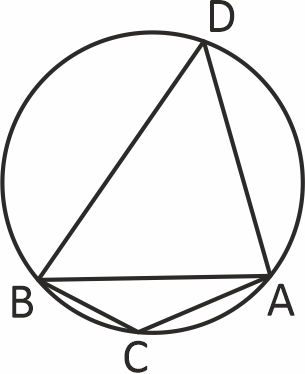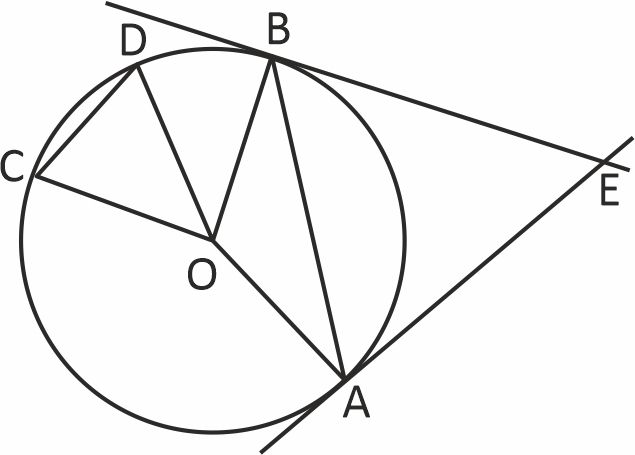Time Left - 10:00 mins
Attempt now to get your rank among 2472 students!
Question 1
The area of a rhombus is 300 cm2. If the length of one of the diagonals of the rhombus is 30 cm, then what is the length in cm of the second diagonal?
Question 2
The sides of an isosceles triangles are 10 cm, 10 cm and 12 cm. What is the area of the triangle?
Question 3
If in the following figure (not to the scale), ∠ACB = 135º and the radius of the circle is 2√2 cm, then the length of the chord AB is:

Question 4
In the following figure (not to scale), at the centre O, if the chord AB subtends double the angle that is subtended by chord CD and the angle ∠AEB = 2∠AOB, then ∠COD is equal to:

Question 5
In which of the following quadrilaterals opposite angles are supplementary?
Question 6
In a triangle ABC, ∠A = 76°, ∠B = 52° and AD ⊥ BC. If DC = 6 cm and AC = 16 cm, then the length of AB is
Question 7
A circle touches the side BC of a ∆ABC at P and also touches AB and AC produced at Q and R, respectively. If the perimeter of ∆ABC = 26.4 cm, then the length of AQ is:
Question 8
In a triangle ABC, the length of BC is less than twice the length of AB by 3 cm. The length of the AC exceeds the length of AB by 1 cm. The perimeter of the triangle is 34 cm. The length (in cm) of the smallest side of the triangle is:
Question 9
The chord AB and CD of a circle intersect at E. If AE = 12 cm, BE = 20.25 cm, and CE = 3DE, then the length of CE is:
Question 10
Which of the following points lies on the line 3x − 4y = −13?
- 2472 attempts
- 6 upvotes
- 36 comments
Sep 13SSC & Railway

